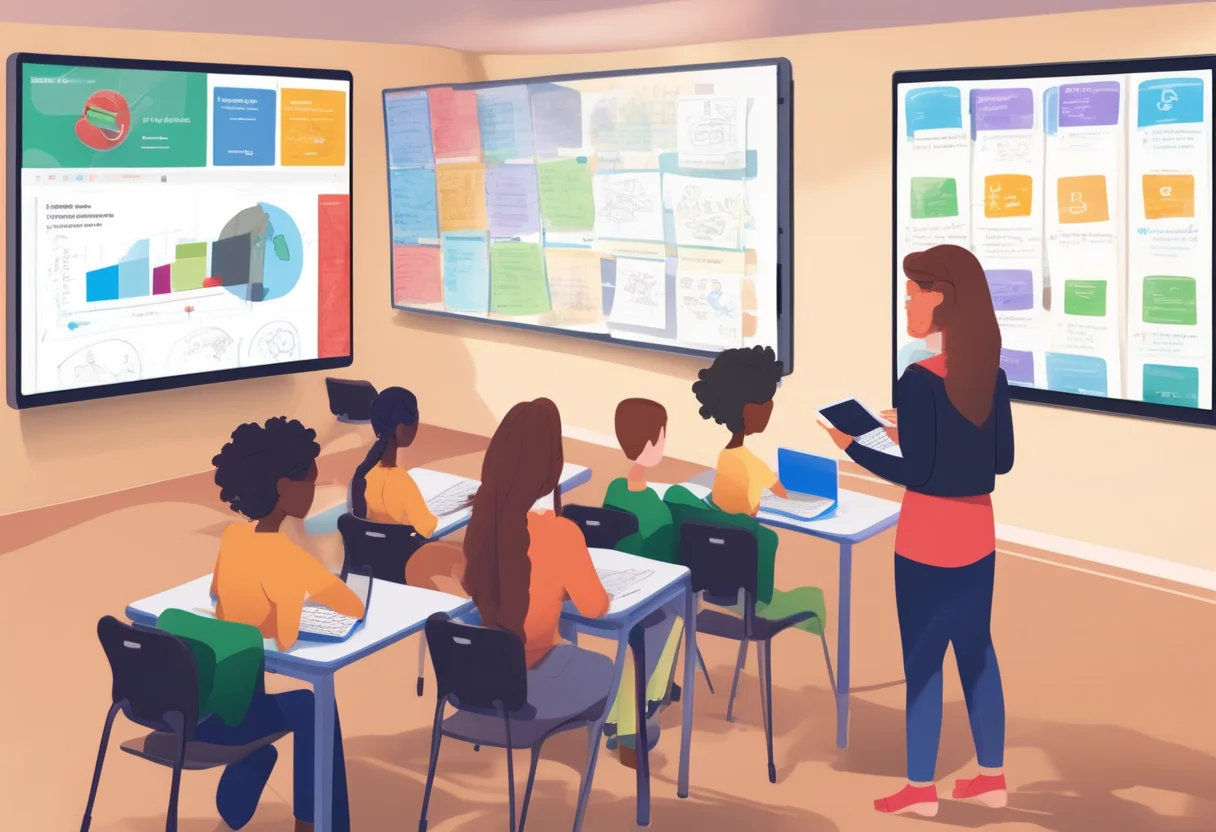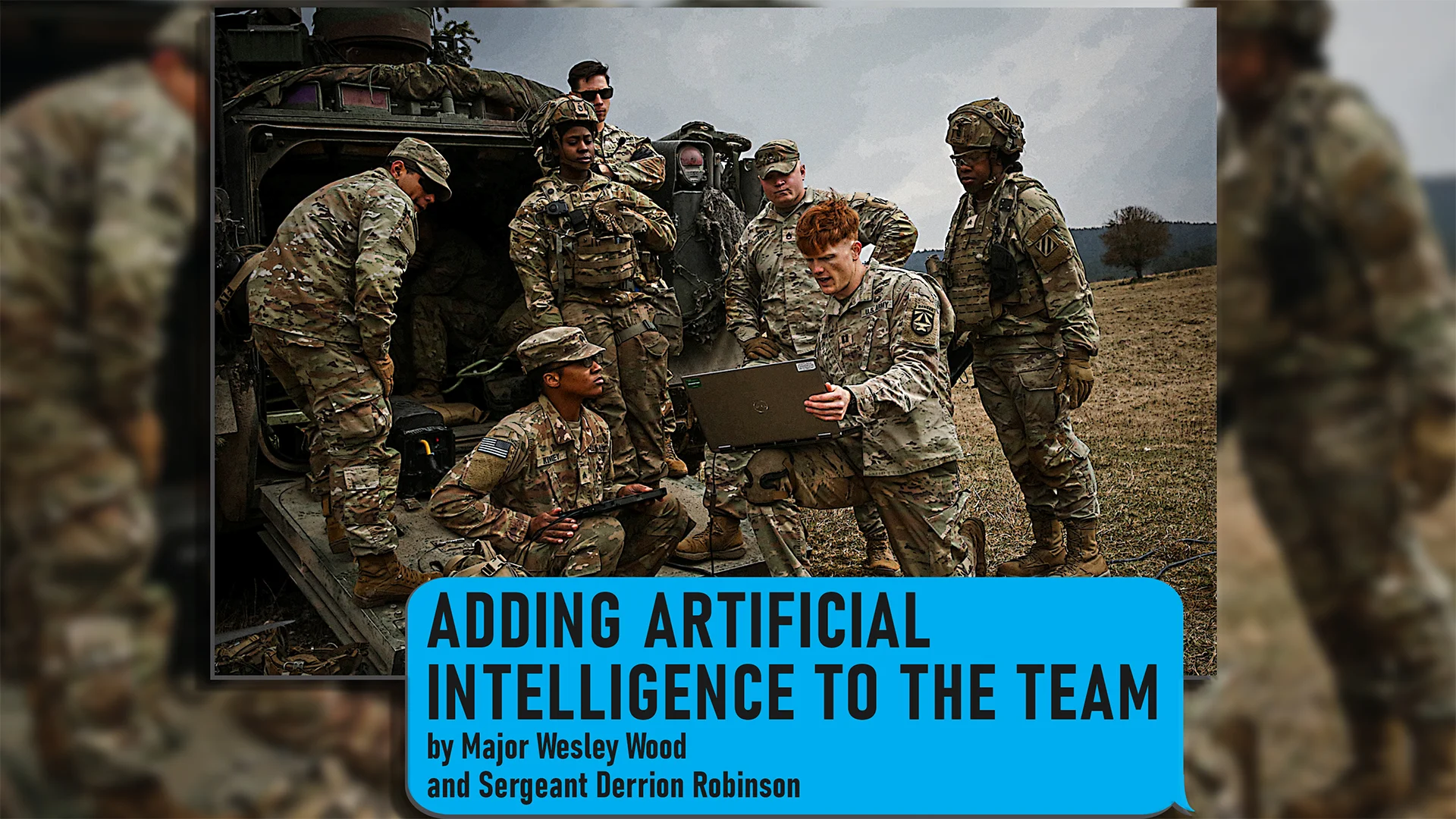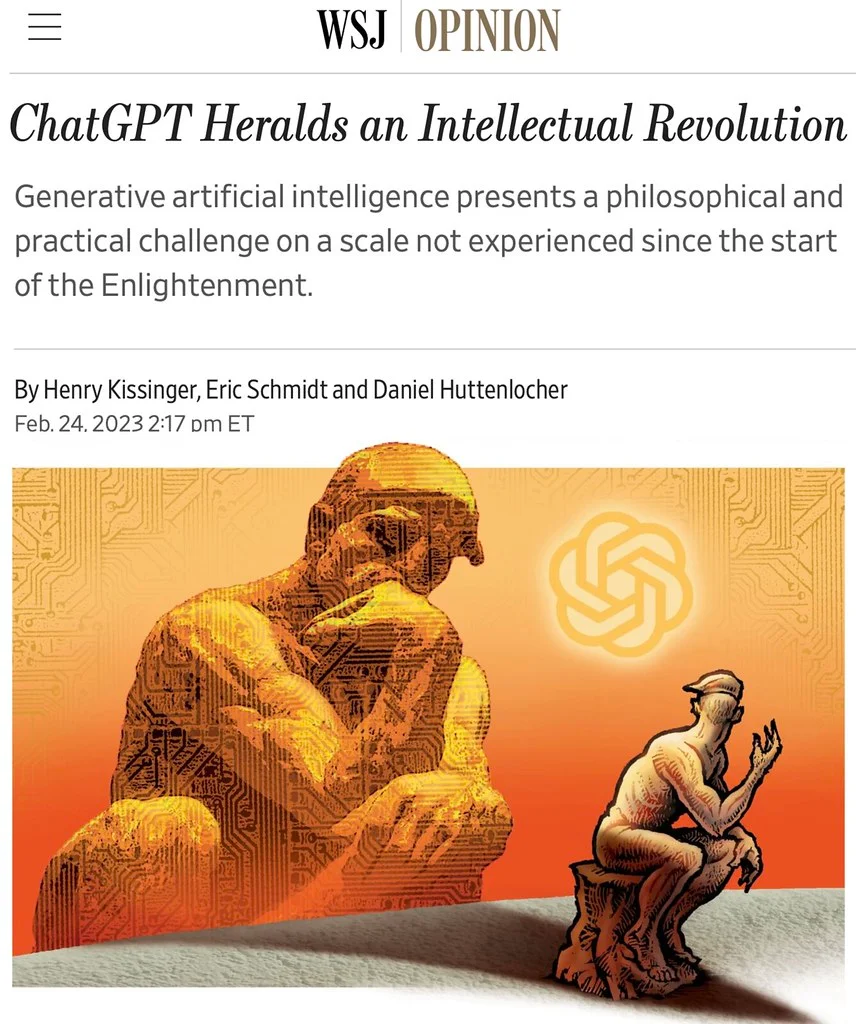
Technology is changing everything, and education is right there in the mix. By 2025, it's expected that AI will run nearly half of our learning tools. That's a big shift in how we teach and learn. So, what can AI prompts really do for education? They're not just about doing things automatically. They're about getting students curious, helping them think deeply, and making learning more personal. Whether it's making classes more engaging or tackling big questions about ethics, AI prompts are leading the charge in educational change. We'll look at how these tools are set to change learning, especially with platforms like Deepbrain AI and AI Studios. Curious to see how AI can make education not just smarter, but more exciting too? Let's dive in!
Summary: This article describes the use of AI prompts in education, focusing on their practical applications in classrooms and their role in developing critical thinking skills. It also addresses ethical considerations and challenges, with references to Deepbrain AI and AI Studios.
Understanding AI Prompts in Education
Defining AI Prompts for Enhanced Learning
AI prompts are like questions or cues you give to AI systems to get specific responses. They're great for sparking critical thinking and creativity, especially in schools. Teachers can use them to create activities where students analyze media, craft stories, or tackle tough problems.
For example, a prompt might ask students to look at how ads persuade people, boosting their media literacy. Writing good prompts involves:
- Encouraging creativity
- Refining ideas
- Asking questions nicely
- Sometimes pretending to be someone else to get detailed responses from the AI
Transformative Impact of AI Prompts in Education
AI prompts are changing the way we learn by making education more personalized and inclusive. They help tailor lessons to fit each student's needs, which is particularly beneficial for gifted students who require materials that match their abilities and interests.

Additionally, AI prompts provide quick feedback, allowing students to identify their strengths and areas for improvement, thereby maintaining motivation and engagement. By promoting creativity and critical thinking, especially in media literacy, AI prompts help students create stories and analyze media messages.
Moreover, they save teachers time by automating lesson plans, tests, and discussion topics, enabling teachers to focus more on interacting with students. For instance, a teacher can input a basic idea into an AI tool and receive different versions of reading materials or vocabulary lists suited for various student levels, facilitating personalized learning.

Writing prompts strategically and politely enhances the quality of AI responses, making educational content more detailed and engaging. This role of AI prompts showcases their potential to create personalized, creative, and efficient learning environments.
For further reading, explore these resources:
- AI writing prompts help boost critical thinking and creativity in schools.
- AI in education makes learning personal and provides instant feedback.
- Effective AI prompt writing keeps students engaged in their education.
Practical Applications of AI Prompts in the Classroom
AI Prompts for Effective Lesson Planning
AI is transforming how teachers approach lesson plans and curricula. It provides tools to create overviews, summaries, and explanations of complex topics, enhancing teachers' understanding and simplifying lesson planning.
Key Benefits:
- Curriculum Integration: AI can develop practice activities that seamlessly fit into curricula, aiding student retention.
- Resource Creation: Worksheets and learning plans crafted by AI ensure educational standards are met.
- Efficient Assessments: Quickly generate assessments, warm-ups, and exit tickets for instant student feedback.
Example: Imagine a teacher using AI to design a 10-minute activity to review last week's math lesson for 5th graders. This approach refreshes their memory and prepares them for new concepts.

For more on using AI in teaching, check out MiddleWeb.
Boosting Student Engagement with AI Prompts
AI-generated prompts are highly effective in the classroom for sparking interest through activities such as writing prompts, problem-solving tasks, and discussion questions. They maintain student engagement by offering varied formats and accommodating both individual and group work.
Additional Advantages:
- Parent Communication: AI assists in sending positive notes to parents, strengthening the home-school connection and boosting motivation.
- Diverse Learning Needs: AI creates assignments and texts at varying levels, ensuring inclusivity.
Example: Picture a teacher using AI to set up discussion questions and a group activity for a science unit. This strategy fosters teamwork and sustains student interest.

For more examples of engaging AI classroom activities, visit SchoolAI.
Personalizing Learning Experiences with AI Prompts
AI prompts significantly aid teachers in customizing learning experiences for each student. They facilitate the creation of assessments and feedback tailored to individual needs, enhancing targeted support.
Personalization Highlights:
- Special Education: AI designs assignments and lessons accommodating special education needs and diverse learning styles.
- Family Communication: It enables personalized communication with families, sharing progress updates that encourage home support.
Example: Consider a teacher utilizing AI to craft a math worksheet targeting a student's weak areas and sending a positive update to the parents.
For more on AI in personalized learning, see Panorama Education.
Integrating AI prompts into the classroom offers numerous benefits, from simplifying lesson planning to enhancing student engagement and personalizing learning. As AI continues to evolve, its role in education will expand, introducing more innovative solutions for educators worldwide.
Developing Critical Thinking Skills with AI Prompts
AI Prompts for Enhancing Critical Thinking and Problem Solving
AI prompts can significantly enhance your critical thinking and problem-solving skills. By asking the right questions and carefully analyzing AI responses, you can broaden your perspective and gain clarity. This method helps develop essential skills like analysis, synthesis, and ethical reasoning, which are fundamental for robust critical thinking.
To maximize these benefits, it's crucial to create clear, open-ended prompts that stimulate thought and improve problem-solving capabilities. AI serves as a "thinking coach," enabling you to challenge assumptions, identify blind spots, and examine problems from various angles. By leveraging AI for quick information gathering and then delving deeper with personal analysis, you can enhance your critical thinking and learning.

AI complements scientific thinking by supporting inquiry-based learning, enriching your engagement without supplanting it. Tools like ChatGPT can assist by summarizing complex papers and generating prompts that explore assumptions, thereby honing your critical analysis skills.
AI Prompts to Boost Creativity and Innovation
AI tools are invaluable for sparking creativity and innovation. They assist with writing, problem-solving, and research, providing convenience and access that fuel creative thinking. AI encourages exploration of diverse perspectives and solutions, promoting independent thought rather than mere reliance on AI-generated answers.
Using AI prompts enhances creativity by prompting you to refine questions and blend various viewpoints, leading to fresh insights and ideas. By challenging assumptions and recognizing AI biases, you enhance digital literacy and ethical awareness, which are crucial for responsible AI use.

Treating AI as a thinking partner, rather than a shortcut, fosters mental effort and creativity, improving reasoning and reducing errors. Teams can utilize AI prompts to explore new business strategies, have AI play devil’s advocate, analyze consequences, and spark innovative solutions. This process of refining ideas is vital for driving innovation across different fields.
Further Reading and Resources
- Enhance critical thinking with AI
- Develop AI prompting skills
- AI as a thinking partner
- Prompt engineering techniques
- AI in education for critical thinking
- Structured debates and ethical discussions
Ethical Considerations and Challenges in AI Prompts
Addressing Bias and Ensuring Equity in AI Prompts
When crafting AI prompts, it's crucial to tackle bias and ensure fairness. Prompts may unintentionally carry stereotypes, causing AI to mirror and spread these harmful ideas. Therefore, we need strategies to spot and stop discrimination in AI outputs.
Generative AI, in particular, can magnify existing biases, making it essential to have solid ethical guidelines. Ethical prompt engineering involves creating prompts that avoid biased or prejudiced responses, aiming for neutral and fair outputs. For instance, an ethical prompt might be:
"Discuss the challenges and strategies for reducing bias in AI systems."

This encourages balanced and thoughtful AI responses.
Ethical Use of AI Prompts in Education
In schools, ethical prompt engineering ensures that AI-generated content respects human dignity, avoids harmful content, and promotes fair learning. Transparency about AI responses is crucial, including acknowledging limitations and risks to build trust and support wise educational use.
Privacy is also a key consideration; prompts must protect personal data and prevent accidental data leaks. Using AI ethically in education means encouraging creativity while steering clear of plagiarism by promoting original and responsible content creation. A good educational prompt might be:
"Create an original essay on climate change solutions emphasizing collaborative human efforts."

This encourages ethical creativity and learning.
Ethical considerations around AI prompts focus on preventing bias reinforcement, misinformation, and harmful content while ensuring privacy, transparency, and fairness. In education, ethical prompt design supports respectful, private, and original AI-generated learning materials, building trust and equity. By tackling these challenges, AI can be a great tool in schools, enhancing learning while adhering to ethical standards.
For more information, you can explore ethical prompt engineering and AI ethics, both of which are key for responsible AI use in education, ensuring technology aids rather than hinders educational goals.
Deepbrain AI and AI Studios
DeepBrain AI: Revolutionizing Video Creation with AI Prompts
DeepBrain AI Studios is revolutionizing video creation with its cutting-edge AI video platform. It transforms text scripts into high-quality videos using incredibly realistic AI avatars—eliminating the need for cameras or actors. Leveraging advanced deepfake and neural rendering technologies, it produces digital humans capable of speaking over 80 languages with natural speech, realistic facial expressions, and perfectly synchronized lip movements.
Key Features:
- Diverse Avatars: Choose from a wide range of stock AI avatars or create custom avatars that align with your brand identity.
- Integration with Tools: Seamlessly integrates with tools like ChatGPT to automate scriptwriting, expediting the creation of video presentations, training materials, marketing content, and educational videos.

- AI Avatar Creation: Avatars are crafted through a sophisticated machine learning process involving data collection, preprocessing, intensive model training, and real-time rendering.
- Variety and Realism: Offers over 100 native AI avatars from various ethnicities and professions, ensuring a super-realistic viewing experience.
- Additional Features: Includes multi-language dubbing, custom avatar creation, conversational AI skills, text-to-video conversion, voice cloning, and collaborative team workspaces.
Transforming Education with AI Prompts in AI Studios
DeepBrain AI Studios is transforming the educational landscape by enabling teachers to create engaging and personalized educational videos quickly. It converts lesson scripts into videos featuring realistic AI avatars fluent in multiple languages, making content creation scalable and ensuring consistent educational materials for diverse global audiences.
Benefits for Educators:
- Custom Avatars: Educators can create avatars that reflect their identity or brand, enhancing student engagement through a familiar digital presence.
- Script Creation Simplified: Tools like ChatGPT streamline script creation, allowing educators to focus on delivering quality teaching.

- Accessibility Features: Automatic subtitles, adjustable voice tone, and multilingual support make educational content more accessible and inclusive.
- Collaborative Workspaces: Facilitate teamwork among teachers and content creators, simplifying the creation and review process of educational videos.
With these innovative tools, DeepBrain AI Studios is reshaping how educational content is crafted and shared, paving the way for more dynamic and personalized learning experiences.
FAQs
Enhancing Student Engagement with AI Prompts
AI prompts can significantly boost student engagement by enabling AI systems to generate more useful and accurate responses. This makes classroom interactions more lively and personalized. For example, AI prompts can produce various outputs such as questions, explanations, or creative content that capture student interest and encourage participation.
Good AI prompts simplify usage and comprehension, keeping students engaged with relevant and timely feedback. Clear and specific prompts reduce confusion, providing precise answers. An example prompt might be: "Explain the causes of the American Civil War in simple terms," which helps produce explanations that keep students actively engaged.
Creative AI Prompts for Critical Thinking Development
AI prompts can be creatively designed to foster critical thinking by using multi-part instructions or scenarios that require students to analyze, synthesize, and evaluate. This method encourages tackling complex problems and explaining reasoning. Effective prompts have a clear purpose and context, essential for promoting critical thinking.

For instance, prompts that ask students to compare viewpoints, identify biases, or predict outcomes help them delve deeper into information. A creative example is: "Analyze the ethical implications of artificial intelligence in healthcare and argue for or against its widespread adoption." Such prompts stimulate critical thinking and the formation of strong arguments.
Personalizing Learning with AI Prompts
AI prompts are excellent for personalizing learning because they can be tailored in complexity and content to suit each student's learning level and preferences. By providing specific context or instructions, AI can generate responses that align with various learning styles, whether visual, textual, or auditory.
Personalized prompts save time and enhance productivity by reducing trial and error, allowing students to focus on key areas. The practice of prompt engineering is vital for customizing AI output to meet individual student needs, ensuring more reliable learning support.

For example, a personalized AI prompt for a student struggling with math might be: "Explain step-by-step how to solve quadratic equations with examples suited for beginners." This approach ensures each student receives the appropriate level of challenge and assistance.
In educational settings, AI prompts serve as a bridge between user intent and AI delivery, providing clarity and direction. Clear prompts lead to more accurate responses, save time, handle complex tasks, and enhance the user experience by making AI interactions smoother and more valuable. By refining prompts based on AI feedback, outcomes improve, making AI prompts a crucial tool for maximizing AI's potential in personalized learning.